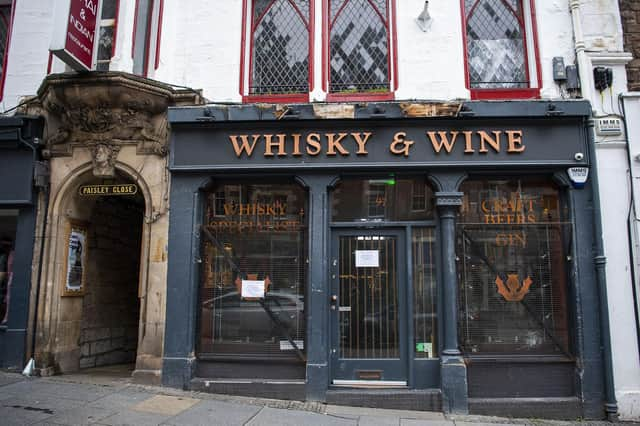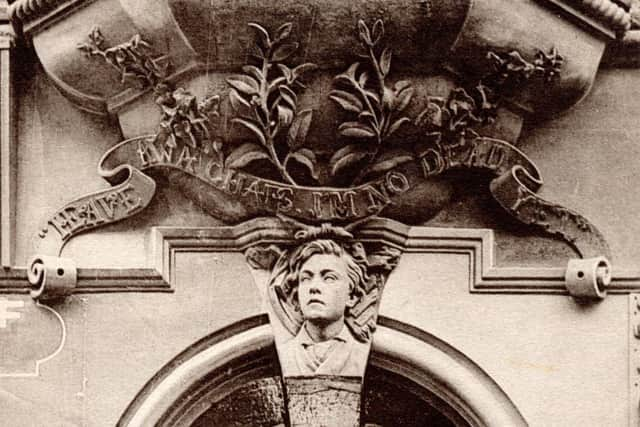Part 3: Who is the real Heave Awa' Lad?


It is recorded that on February 22 1862, Joseph McIvor, described as being four feet 10 in height, and having a fresh complexion, red hair and grey eyes, enlisted in the Royal Navy as a Boy 2 Class at the Edinburgh naval recruitment station. He gave his age as 14 years [he was probably a year younger] and his father’s name as Patrick McIvor. The plan was for him to train as a sailor until he was 18 years old, and then serve in the Royal Navy for 10 full years.
After early training, he served on board the Pearl corvette at the China station, advancing to become an Able Seaman. But on January 26 1871, when Joseph belonged to the Reserve after the Pearl had been paid off, he deserted from the navy and went on the run. A £3 reward for his apprehension was posted and his description was published in the Police Gazette: he was now 23 years old and five feet nine inches tall. His red hair and grey eyes might have been conspicuous, but Joseph managed to keep one step ahead of the shore patrols.
Advertisement
Hide AdAdvertisement
Hide AdHe went to Liverpool and emigrated to the United States on the steamer Samaria, arriving in Boston, Massachusetts, on June 3 1871.


The final notice of his activities comes from the Edinburgh Evening News of February 23 1880, which says that 'Joseph McIvor, the hero from the 1861 house collapse, was on a visit to his native city. He would in a few days be sailing to America "where he holds an honourable post in the United States navy".'
The former navy deserter is likely to have changed his name at some stage of his transatlantic career, since no person with his name, or variations thereof, is listed in US census or death records. Nor can he be located in the primitive US Navy records of the time, kept in Washington DC and consisting of muster rolls of each ship, meaning that unless we find out on which ship McIvor was serving, the chances to find him would be small indeed.In the search for the Heave awa’ Boy, a 1896 cutting from a Leith newspaper in one of the folders of the Edinburgh Room at the Central Library brought up an unexpected lead, or perhaps rather mystification: “Heave awa’, lads – Death of a Famous Edinburgh Man.”
This personage was the 48-year-old commercial traveller John Geddes, who had expired from acute laryngitis in West Derby, a suburb to the east of Liverpool, on August 22 1896; his brother William Geddes, of 9 Antigua Street in Edinburgh, was present at the death.
Advertisement
Hide AdAdvertisement
Hide AdAs a ‘little boy’, he had been present at the collapse of the old house in the High Street, the Dundee Advertiser claimed, and made use of the traditional outcry to attract attention; although his family lived in the top flat, he had survived without serious injury. Later in life, he kept having nightmares about collapsing houses and a beam trapping among the rubble and was loath to speak about his experience.


A look at the 1861 Census shows that the 15-year-old message boy John Geddes really did live at 4 Paisley Close, and the contemporary newspapers list him among the survivors, although both his parents expired in the catastrophe. But as we know, the important article in the Scotsman of June 1862 clearly names the Heave awa’ Boy as 'the boy M’Iver', so the situation would seem to be that John Geddes was another survivor of the house collapse, whose life experiences were accidentally or deliberately ‘improved upon’ in the Dundee Advertiser after his death in 1896, making him a hero and a 'Famous Edinburgh Man’.
All over England, provincial newspapers reported short and garbled versions of the story in their ‘Scottish News’ columns; this has led to John Geddes, the second Heave awa’ Boy, having his fame trumpeted all around the Internet by a troupe of gibbering ‘monkeys’ who believe anything they read in a blog.
The fall of the six-story Land in the High Street, in November 1861, was a cataclysmic event in the annals of the Old Town of Edinburgh, prompting architectural reform and social change. The story of the Heave awa’ Boy can be verified from some very early accounts of the disaster and is likely to be based on fact.
Advertisement
Hide AdAdvertisement
Hide AdThe Boy was not named in the 1861 accounts of the disaster, but two independent newspaper stories from 1862 refer to him as 'The Boy M’Ivor’ and the original lists of wounded include the 12-year-old Joseph McIvor, who later led an adventurous life and emigrated to the United States. The final record of him is that in 1880, he was back for a visit to Edinburgh, before returning to America, where he was serving in the US Navy.
It is strange but true that an alternative Heave awa’ Boy materialised in 1896: the commercial traveller John Geddes, but although he was a survivor of the house collapse, his purported identity might well have been just a newspaper hoax.We can conclude with another quote from the poetic Rev Thomas Constable, whose rousing effort was published in the Scots Magazine for 1895:“Heave awa’, lads, I’m no deid yet!”Humanity cries – and her day will daw;For ne’er can the Father o’ man forget,That richt shall be micht for ane an’ a’.
Jan Bondeson is the author of Murder Houses of Edinburgh, published by Troubador, priced £12.99, from https://www.troubador.co.uk/bookshop/history-politics-society/murder-houses-of-edinburgh/